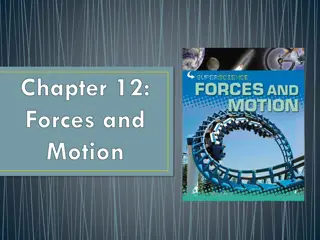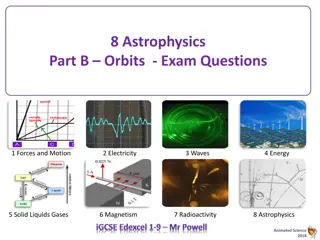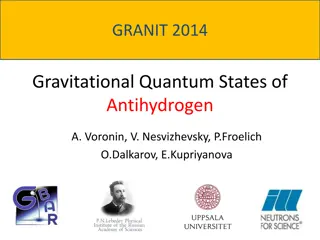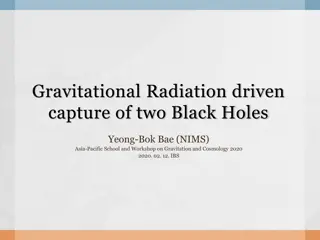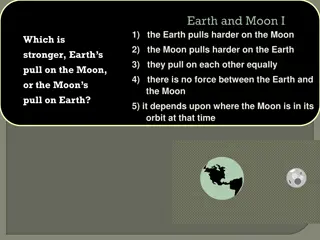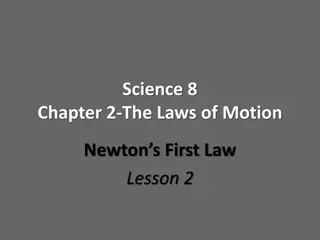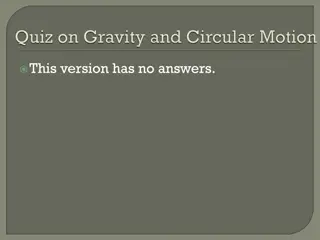Understanding Astrophysics: Forces, Motion, and Gravitational Fields
Explore the realm of astrophysics through forces, motion, energy, and gravitational fields. Delve into topics like orbits, velocity, and the fundamental units of measurement, all depicted in engaging visual representations. Gain insights into the vastness of the universe, galaxies, stars, and planetary motions. Learn about gravitational forces affecting celestial bodies and the intricate relationship between orbital speed, radius, and time periods.
Download Presentation

Please find below an Image/Link to download the presentation.
The content on the website is provided AS IS for your information and personal use only. It may not be sold, licensed, or shared on other websites without obtaining consent from the author. Download presentation by click this link. If you encounter any issues during the download, it is possible that the publisher has removed the file from their server.
E N D
Presentation Transcript
8 Astrophysics 1 Forces and Motion 2 Electricity 3 Waves 4 Energy 5 Solid Liquids Gases 6 Magnetism 7 Radioactivity 8 Astrophysics Animated Science 2018
8 Astrophysics Animated Science 2018
Quick Thinking. Units & Quantities Match Up Energy Power Mass Force Temperature degree Celsius watt Joule kilogram Newton C kg N J W Animated Science 2018
SI Units System Recap. A physical quantity is something that can be measured. For any measurement, the unit being used must be stated to give an understanding of the scale of the measurement. For example, distance can be measured in kilometres or in miles. They are similar, but not the same and it is important to identify which was used for the measurement, to know how far the distance actually is. Syst me Internationale d'Unit s The units that scientists use all over the world are standardised in the Syst me Internationale d'Unit s - SI units. It is important to remember these six fundamental (or 'base') units of measurement: metre (m) - unit of length kilograms (kg) - unit of mass second (s) - unit of time ampere (A) - unit of electrical current kelvin (K) - unit of temperature mole (mol) - unit of the amount of substance Animated Science 2018
8 Astrophysics Units Review Task: Work with a partner and discuss the ideas here Take a few of these terms and take it in turns to explain to another what they mean in your own words and ensure you have a copy. Speed Name mass Force Energy Distance Displacement (vector) Unit kg newton joule m Abbreviation m N J d Kilogram (kg) Joule (J) Metre (m) Acceleration Newton (N) Watt (W) SI Base Units m s metre (m) - unit of length kilograms (kg) - unit of mass second (s) - unit of time ampere (A) - unit of electrical current kelvin (K) - unit of temperature mole (mol) - unit of the amount of substance ms-2 Nkg-1 Gravity g Velocity (Vector) Speed v ms-1 s Vectors have magnitude (size) and direction! Scalars have size Animated Science 2018
8 Astrophysics Animated Science 2018
8B Motion in the Universe p377 8.2 know that: the universe is a large collection of billions of galaxies a galaxy is a large collection of billions of stars our solar system is in the Milky Way galaxy. 8.3 understand why gravitational field strength, g, and know that it is different on other planets and the Moon from that on the Earth 8.4 explain that gravitational force: causes moons to orbit planets causes the planets to orbit the Sun causes artificial satellites to orbit the Earth causes comets to orbit the Sun 8.5 describe the differences in the orbits of comets, moons and planets 8.6 use the relationship between orbital speed, orbital radius and timeperiod: orbital speed = (2 orbital radius)/time period v = (2 r)/T Animated Science 2018
8B Motion in the Universe p377 8B Motion in the Universe p377 Key Topic Aims . (Recall & Apply ideas and formulae) Key Topic Aims . (Recall & Apply ideas and formulae) 8.2 know that: the universe is a large collection of billions of galaxies a galaxy is a large collection of billions of stars our solar system is in the Milky Way galaxy. 8.2 know that: the universe is a large collection of billions of galaxies a galaxy is a large collection of billions of stars our solar system is in the Milky Way galaxy. 8.3 understand why gravitational field strength, g, and know that it is different on other planets and the Moon from that on the Earth 8.3 understand why gravitational field strength, g, and know that it is different on other planets and the Moon from that on the Earth 8.4 explain that gravitational force: causes moons to orbit planets causes the planets to orbit the Sun causes artificial satellites to orbit the Earth causes comets to orbit the Sun 8.4 explain that gravitational force: causes moons to orbit planets causes the planets to orbit the Sun causes artificial satellites to orbit the Earth causes comets to orbit the Sun 8.5 describe the differences in the orbits of comets, moons and planets 8.5 describe the differences in the orbits of comets, moons and planets 8.6 use the relationship between orbital speed, orbital radius and timeperiod: 8.6 use the relationship between orbital speed, orbital radius and timeperiod: orbital speed = (2 orbital radius)/time period orbital speed = (2 orbital radius)/time period v = (2 r)/T v = (2 r)/T Animated Science 2018
Thinking and Discussion Task.... TASK: Pick one of these ideas with a partner and see if you can explain why it is wrong....then explain it to another pair....... 1. The Sun orbits the Earth and this causes day and night 2. The phases of the Moon are caused by cloud cover 3. The planets and the Moon are light emitters 4. Our Sun and the planets are the same size 5. The surface of the Sun has no visible features 6. Light years are measured in years 7. Dwarf planets are planets Animated Science 2018
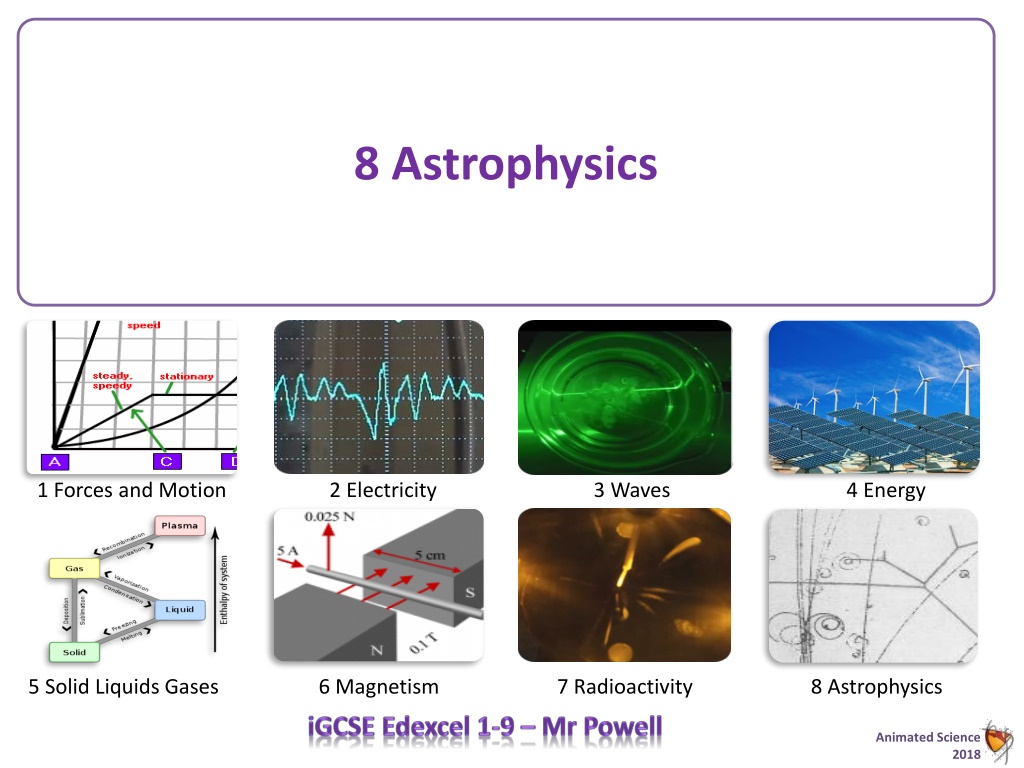

![[PDF⚡READ❤ONLINE] Cosmology and Particle Astrophysics (Wiley-Praxis Series in As](/thumb/21627/pdf-read-online-cosmology-and-particle-astrophysics-wiley-praxis-series-in-as.jpg)
